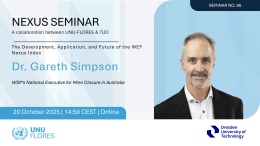On 29 January 2018, UNU-IAS co-hosted a workshop on Future Perspectives of Bioenergy Development in Japan: An Alternative Scenario with Domestic Supply. Chun Sheng Goh, currently a JSPS-UNU Postdoctoral Fellow at UNU-IAS and researcher with the National Institute for Environmental Studies, Japan (NIES), co-coordinated the workshop with Takanobu Aikawa of the Renewable Energy Institute to examine the possible scenarios of bioenergy development in Japan. Participants included researchers from the University of Tohoku, Tokyo Institute of Technology, Tokyo University of Agriculture and Technology, University of Tsukuba, The University of Tokyo, and the Japan Bioenergy Association.
One key element of discussion centered on biomass as a key substitute for nuclear power in Japan. Over the past year and a half, approved biomass power generation capacities have sharply risen. But this rapid development has raised serious concerns about availability and sustainability of biomass feedstock in Japan. As the domestic forestry sector is currently under-developed, international trade has been the main focus of the industries for future biomass supply. Southeast Asia and North America are regarded as likely major suppliers. However, oversea supply also remains highly uncertain and may be risky in terms of sustainability. Another striking fact is that a portion of approved capacities have plans to burn palm oil for power, which may trigger unwanted consequences for the environment.
One major drawback identified through the workshop is that the current Feed-in Tariffs scheme is designed only for electricity generation while heat production is left out. As such, the scheme fails to encourage efficient use of heat, but rather fosters the construction of centralized large-scale biomass power plants instead of combined heat and power (CHP) systems which have a higher energy efficiency (roughly 30% vs 80%). As the latter can operate on a smaller scale, it is better adopted in less populated areas with better access to domestic biomass. However, this is currently being overlooked.
In this context, the researchers plan to work collaboratively to further analyze and discuss a scenario for bioenergy development in Japan that places more focus on domestic biomass resources. In addition to the use of waste streams, such a scenario should emphasize the revitalization of the domestic forestry sector with sustainable forest management that is able to support decentralized bioenergy installations through multiple use of woody biomass. The next step to achieving this will be to critically examine it with various experts and key informants from government, industry, and the scientific community, through a series of group discussions, workshops and interviews in the near future. Through these processes, the group aims to provide practical policy recommendations to decision makers.


